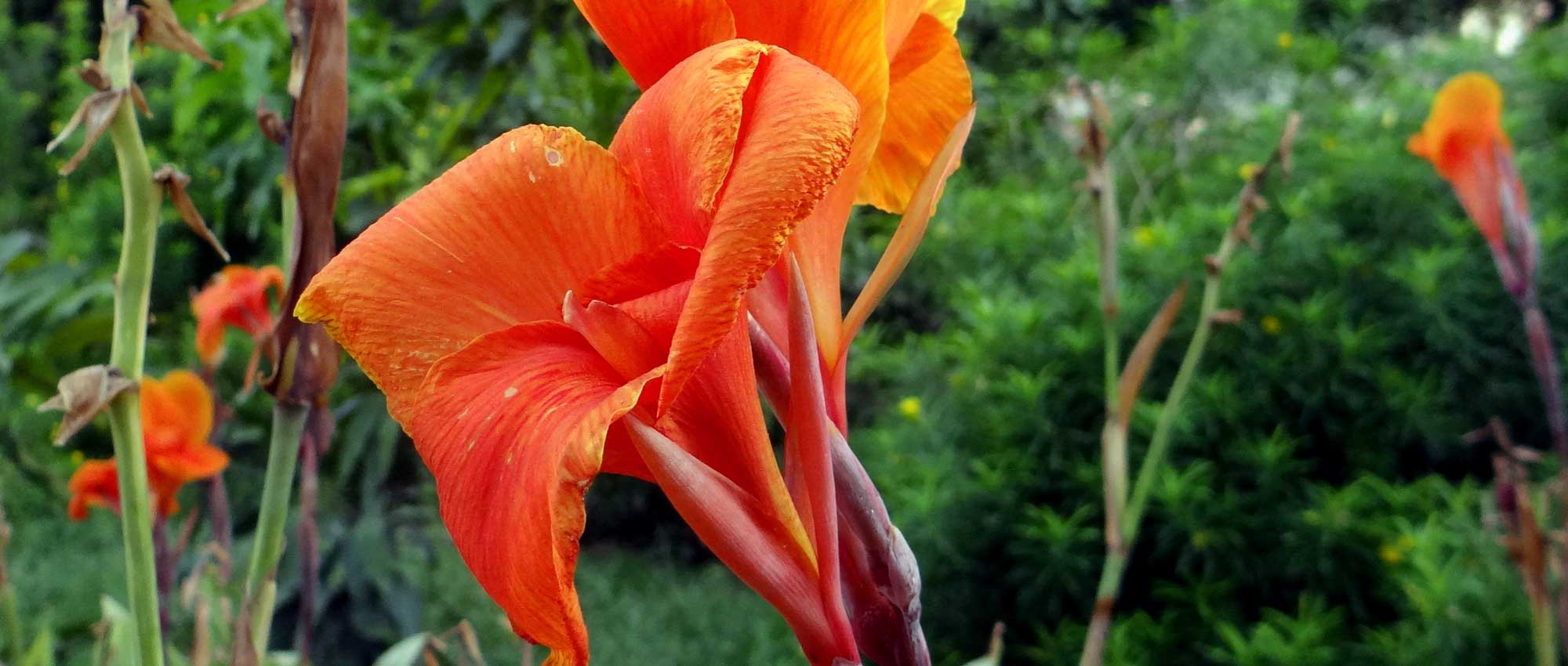
Canna: planting, growing and care
Contents
Cannas in a nutshell
- Cannas are appreciated for the exoticism they bring to the garden!
- They have an impressive and majestic silhouette.
- Their foliage is very decorative, green or purplish, sometimes striate.
- They offer vibrant flowers in warm tones during summer!
- Just like dahlias, their rootstocks are kept safe from frost throughout the winter.
A word from our Expert
By their lush appearance and flamboyant flowering, cannas are the ideal plants to transport us to exotic places in the garden! We appreciate them as much for their summer flowering in warm shades of yellow, orange, or red, as for their extremely decorative foliage, green or purple, sometimes beautifully striate. Discover the stunning red flowering of the botanical species Canna indica… and those of the many horticultural varieties, such as Canna ‘Durban’, with orange flowers, or Canna ‘Cleopatra’, with variegated red and yellow flowers…
Majestic and imposing plants, cannas immediately add a lot of volume to a flowerbed! They certainly deserve a central place there. They create an impressive effect right away, which is why they are often used in cities to decorate public spaces. However, their size can vary quite a bit: there are giant cannas as well as dwarf cannas, suitable for pot cultivation!
Little sensitive to diseases and pests, they are robust, very vigorous plants with rapid growth! Overall, they are not very hardy, although some varieties can withstand temperatures down to -10 °C. To provide beautiful and generous flowering, they require a warm location, sufficient moisture, and rich soil! Planting takes place in spring, as soon as there is no longer a risk of frost… or in winter indoors, to bring them out later and save time! It is possible to sow canna seeds, but they also multiply very well by dividing the rootstock.
Botany
Botanical data
- Latin name Canna sp.
- Family Cannaceae
- Common name Canna, Indian shot
- Flowering from July to October-November
- Height between 60 cm and 2.50 m
- Exposure full sun
- Soil type rich, fertile, cool, well-drained
- Hardiness variable. Often 0°C, sometimes -8°C, but down to -15°C for Canna indica.
The canna, also known as Indian shot, is a perennial plant with a rhizome that originates from the tropical and subtropical regions of America (Central America, South America, the Caribbean…)… which explains its frost sensitivity! It has naturalised in several regions of the world (Australia, New Zealand, Southeast Africa, Hawaii…). In the wild, it is found in wet areas, forest edges, and along riverbanks. Many varieties obtained through hybridization are cultivated in gardens. It is appreciated for both its large foliage and its flamboyant flowering. There are a total of about a dozen botanical species of Cannas. The most commonly cultivated is Canna indica, also known as Canna edulis.
The name canna comes from the Greek κάννα (kanna), which refers to a reed or bulrush. The species name indica means “from the Indies” (West Indies, as the species originates from America). Its other species name, edulis (synonymous with C. indica), means edible. The canna is also known by the vernacular name Indian shot. In South America, it is also called Achira.
Cannas are quite close to ginger, banana plants, heliconia, and strelitzia. Their foliage closely resembles that of banana plants. The canna belongs to the family Cannaceae, of which it is the only representative! Indeed, this family contains no other plant genus. They are monocotyledonous plants, like grasses, palms, or orchids.
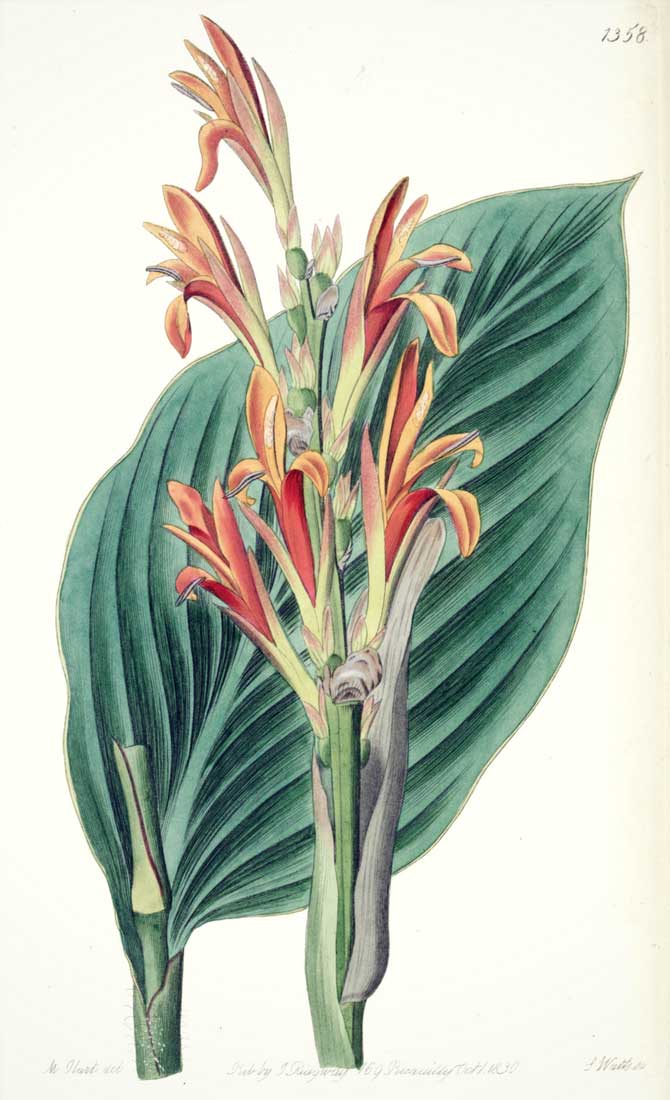
Canna indica: botanical illustration
Cannas form large clumps of upright, very imposing leaves. They are vigorous plants that grow quickly. The stems are straight, robust, and unbranched. The smaller varieties do not exceed 60 cm in height, while the larger ones can reach 2.50 m or more! This is particularly true for Canna musifolia. The botanical species found in nature are often taller than the horticultural varieties.
Cannas flower from July to October-November. They have the advantage of offering a long flowering period. The flowers are positioned terminally. They are gathered in clusters at the top of upright stems above the foliage.
Cannas are remarkable for their brilliant flowering! The flowers always have warm and very bright colours. Depending on the varieties, they are golden yellow, orange, or red, sometimes pink… The flowers can also be cream, or even salmon. There are also a few varieties with white flowers, but they are somewhat less common. It often happens that the flowers are bicoloured, spotted… Sometimes, they have different colours and patterns on the same plant, as seen in Canna ‘Cleopatra’.
The hybrids offer truly impressive blooms, with large flowers and wide, frequently spotted petals, while the flowering is much finer in the botanical species Canna indica.
The flowers are original, irregular, and can resemble those of irises or orchids. They often measure between 5 and 10 cm in diameter. The flowers consist of three petals and three sepals, which are quite discreet, as they are small and somewhat hidden. It is the staminodes (modified stamens) that are very decorative, as they mimic petals by taking on a very wide shape and bright colours! There are four sterile staminodes resembling petals, and a single fertile stamen, bearing pollen.

Cannas often bloom in bright and warm shades! Canna ‘Striata’, Canna ‘Red King Humbert’, and Canna ‘Yellow Humbert’ (photo Mauroguanandi)
Cannas are as interesting for their flowers as for their foliage! The foliage alone is enough to make them very decorative, even in the absence of flowers. They have large, oblong, and very wide leaves, giving them a lush appearance. The tip of the leaf is pointed, acuminate. The leaves are simple, entire, arranged alternately, and sheathing at the base (the petiole surrounds the stem).
The foliage of the canna is particularly elegant; it is appreciated for its majestic and lush appearance! The leaves often measure between 40 and 60 cm in length, sometimes up to 1 m. They reach 10 to 30 cm in width. Its leaves resemble those of the banana plant. This is even more noticeable in Canna musifolia, which owes its name to this (= literally, “Canna with banana-like leaves”).
The leaves are often green, but it is also common for them to be purple. They can sometimes be very dark, almost black, as in Canna ‘Australia’. This creates a superb contrast with the very bright flowering, making it stand out even more. Sometimes, the foliage changes colour over time! This is the case, for example, with Canna ‘Durban’. The leaves of this variety are remarkable for their warm colour tones. The leaves can also be variegated with cream-white, as seen in the variety ‘Stuttgart’. In many varieties, the leaves bear very beautiful striations, corresponding to the veins that take on a different colour from the lamina. They are golden yellow in Canna striata.

Cannas offer superb foliage, quite different depending on the varieties! From left to right, Canna ‘Durban’, Canna ‘Stuttgart’, and Canna ‘Striata’
The canna is sometimes considered a bulbous plant; however, it is not a bulb, but a thick rhizome (swollen underground stem), containing nutrient reserves in the form of starch. This allows for easy multiplication of the plant, simply by dividing it. The rhizome of Canna indica is edible.
After flowering, the canna bears surprising fruits: rounded capsules covered with small thorns. These capsules are often reddish or purplish and somewhat resemble the fruits of castor. They contain beautiful round, shiny black seeds, which are sometimes used as beads for making jewellery. You can collect them to sow. The seeds are very hard, which is why they need to be soaked in hot water before sowing.
Although cannas are relatively not very hardy and need to be dug up in autumn in cold regions, some species withstand the cold quite well. Thus, Canna indica and Canna musifolia are hardy down to -10 °C. However, we recommend applying a thick mulch to protect them from the cold.
There are also aquatic cannas, which can be grown directly in water. The varieties have generally been obtained from the species Canna glauca.
The main varieties of Canna
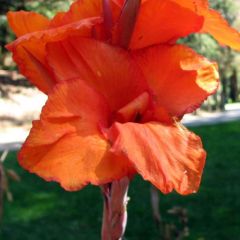
Canna Wyoming - Indian shot
- Flowering time August to November
- Height at maturity 1,50 m
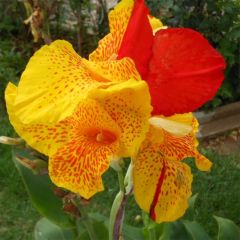
Canna Cleopatra - Indian shot
- Flowering time August to December
- Height at maturity 1,20 m
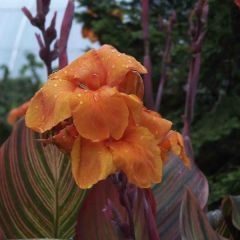
Canna Durban - Indian shot
- Flowering time August to December
- Height at maturity 1,50 m
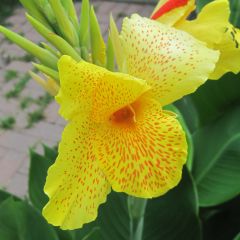
Canna En Avant - Indian shot
- Flowering time August to November
- Height at maturity 1,50 m
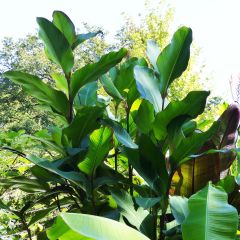
Canna Musifolia - Canna Lily
- Flowering time August, September
- Height at maturity 2,80 m
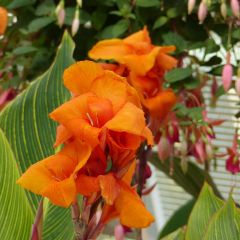
Canna Striata - Indian shot
- Flowering time August to October
- Height at maturity 1,50 m
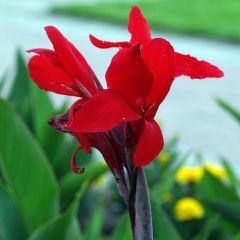
Canna Firebird - Indian shot
- Flowering time August to December
- Height at maturity 90 cm
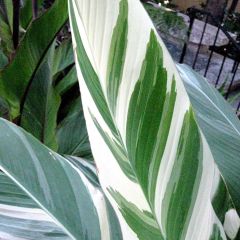
Canna Stuttgart - Indian shot
- Flowering time August to December
- Height at maturity 1,20 m
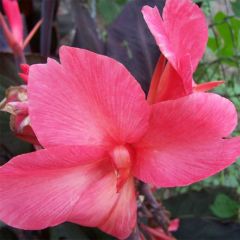
Canna Felix Roux - Indian shot
- Flowering time August to December
- Height at maturity 60 cm
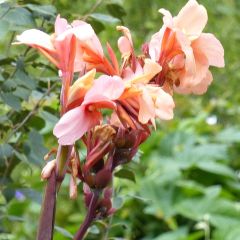
Canna Madame Angèle Martin - Indian shot
- Flowering time August to December
- Height at maturity 1,60 m

Canna Endeavour - Indian shot
- Flowering time September to December
- Height at maturity 2,50 m
Discover other Cannas
View all →Available in 2 sizes
Available in 0 sizes
Available in 1 sizes
Available in 1 sizes
Available in 1 sizes
Available in 1 sizes
Available in 1 sizes
Available in 1 sizes
Available in 2 sizes
Planting Canna
Where to plant Cannas?
Canna needs warmth… Place it in full sun! Its flowering is likely to be much less beautiful if you install it in the shade. Similarly, plant it preferably in a location sheltered from prevailing winds.
Canna is a relatively greedy plant; it loves soils rich in humus and fertile. It is always beneficial to add compost or manure to enrich the soil before planting. It thrives in rather deep and loose soils. As in nature, it often grows in wet areas or by the riverbank, canna appreciates soils that remain relatively cool, but it is important to install it in well-draining ground.
You can plant canna near a pond, for example, alongside ferns, gunneras, or Asian primroses… Especially if you are growing Canna glauca, which grows very well with its feet in water, submerged! There are a few other varieties of aquatic cannas, such as the cannas ‘Erebus’ or ‘Endeavour’.
Canna can adapt to pot planting, for example, to decorate a balcony or terrace, but choose the shorter varieties, such as Canna ‘Felix Roux’.
As canna is a plant of tropical or subtropical origin, not always very hardy, you can also grow it in a greenhouse or conservatory.
→ Read also: Growing canna in a pot
When to plant?
Cannas are planted in the ground in spring, in May or June, when there is no longer a risk of frost. You can plant as early as April if you live in a region with a mild climate.
You can save time by first planting the rhizomes in a pot (in February-March), which you will place indoors, then taking them out later when the temperatures have warmed up.
How to plant cannas?
In pots:
To allow cannas to form large clumps more quickly and hasten flowering, do not hesitate to plant the rhizomes in pots at the end of winter, which you will place indoors, under heated shelter… To install them in the garden as soon as there is no longer a risk of frost.
- Choose a pot of at least 30 cm in diameter and fill it with potting soil.
- Plant the rhizome about ten centimetres deep.
- Cover with soil and firm down.
- Water.
- Place the pot in a greenhouse, conservatory, or inside your home.
You can install them in the garden from the end of May. We recommend acclimatising them gradually, first placing them under a slightly cooler shelter before planting them permanently outside.
Planting in the garden:
In the ground, maintain a distance of 50-60 cm between plants… Even up to 1 m for the larger varieties.
- Prepare the ground. We suggest adding well-decomposed manure or compost, as canna appreciates rich soils.
- Plant the rhizome about ten centimetres deep. If you have previously planted it in a pot, install the leafy plant directly in the ground.
- Replace the soil and firm down slightly.
- Water.
Aquatic cannas, such as Canna glauca, can be installed in a pond, under about 10 cm of water.
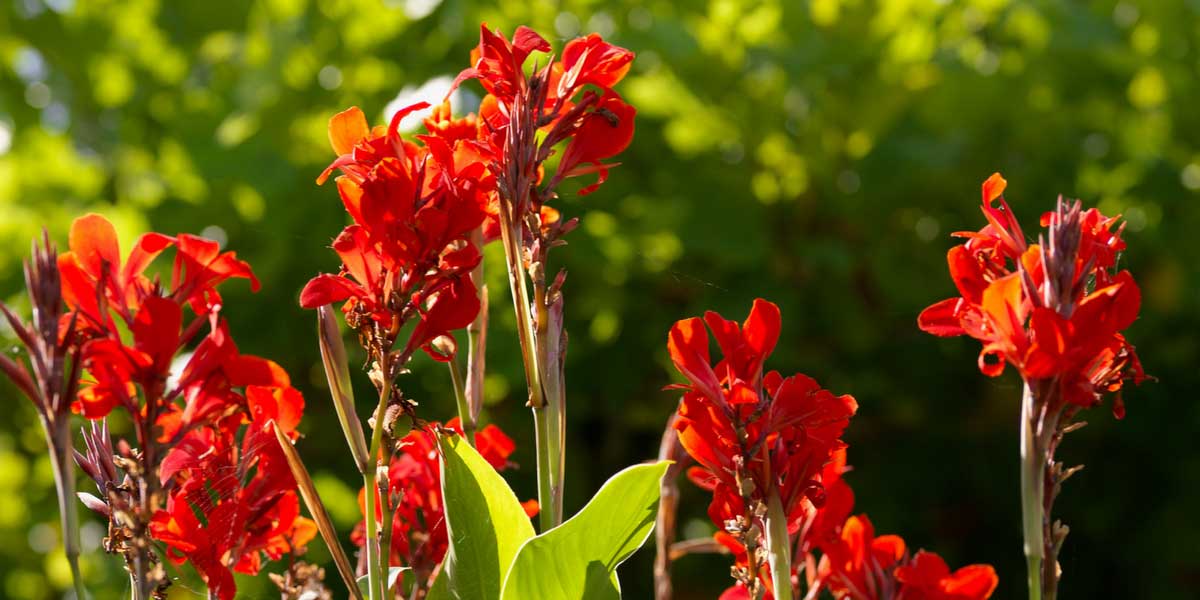
Canna ‘Brilliant’ (photo Steven Bemelman – iBulb)
Care
Cannas require a bit of maintenance. It is best to remove faded flowers, as this encourages a longer flowering period. As soon as a flower stem is completely finished blooming and no longer has any buds, you can cut it back.
Water regularly in summer, as cannas enjoy relatively cool soil (but avoid excess moisture). We also recommend mulching the soil to prevent it from drying out too quickly. Watering will need to be a bit more frequent if you are growing them in pots!
We suggest adding fertiliser or organic matter in spring, when the plant is in full growth. Cannas love rich soils! You can place a layer of compost or well-rotted manure at their base… In pots, use a fertiliser rich in nitrogen.
Wintering:
Lift cannas in autumn (October-November), before the first frosts, to protect them from the cold:
- Dig up the rootstocks using a fork, being careful not to damage the rhizomes.
- Select the best rhizomes.
- Cut the faded stems and leaves to about ten centimetres above the stump, then allow the rhizomes to dry.
- Place them in a box filled with sand or potting soil, which you will keep in a dry, airy place, protected from frost.
- You can take them out again in spring.
If you live in a warm climate, you can leave the rhizomes in place, but still protect them with a thick mulch! Also, cut the foliage to about 10 cm above the ground once it has faded. Finally, if you are growing cannas in pots, simply bring the pot into a greenhouse or conservatory. If the temperature is above 10 °C, they can remain in growth and continue to flower in winter.
→ Also read: Wintering summer bulbs with Virginie’s tips!
Cannas do not really experience problems with diseases and pests; except perhaps slugs and snails, which sometimes tend to eat the young shoots in spring. They can also occasionally be attacked by red spider mites, which cause leaf discolouration.
Propagating
Canna is primarily multiplied by division; a technique that is quite simple to carry out and ensures you obtain exactly the same variety. It is also possible to sow canna seeds.
Sowing
You can either harvest seeds from your cannas (if you have left a few faded flowers on your plants) or buy them directly. Sowing takes place at the beginning of spring.
- Fill a thermos with hot water, then place the seeds in it for 24 hours. The outer shell of the seed is very hard, and immersing the seed in water helps to soften it. It is sometimes recommended to scarify the seeds by rubbing them on sandpaper just before placing them in water, but this step is not obligatory.
- Remove the seeds from the water.
- Fill a pot or seed tray with seed compost.
- Sow the seeds.
- Cover them with substrate.
- Water.
- Place the pot in a bright location, at a temperature between 20 and 25 °C.
Once the seeds have germinated, the young seedlings grow quite quickly, but there is little chance that the plant will flower in the year of sowing… you will often have to wait at least until the second year to enjoy the flowers!
Division of rootstocks
Divide your cannas at the end of winter, around March.
- Dig up the rootstocks if they are in the ground, or choose rootstocks from those you have stored frost-free for the winter. You can remove excess soil to make the rootstock more visible.
- Cut them into several fragments, using a knife or by hand. Each piece should have roots and at least one bud.
- Fill a few pots with compost, possibly mixed with a bit of sand.
- Plant the pieces of rootstocks.
- Place the pots in a sheltered location, in a relatively warm spot. This allows them to start their growth under optimal conditions.
- You can then take them outside when the temperatures have warmed up and there is no longer a risk of frost.
Also, check out our tutorial How to multiply your cannas, and our video tips:
Associating
Cannas are obviously perfect for creating an exotic bed! Accompany the vibrant colours of cannas with other flamboyant flowers, such as crocosmias, kniphofias, or hedychiums… Add plants with large, well-developed foliage: banana plants, colocasias, castor beans, and possibly some palms and arborescent ferns. The idea is to gather a lush vegetation, punctuated by a few impressive flowers.
Since they love moisture and cool soils, you can plant cannas at the edge of a pond… or even in the water, for Canna glauca! Establish lush vegetation on the banks, with ferns, gunneras, or colocasias… Enjoy the delicate flowering of Schizostylis coccinea, and the stunning red flowers of Lobelia cardinalis. You can add a few graphic and light plants, such as grasses, horsetails, or bulrushes…
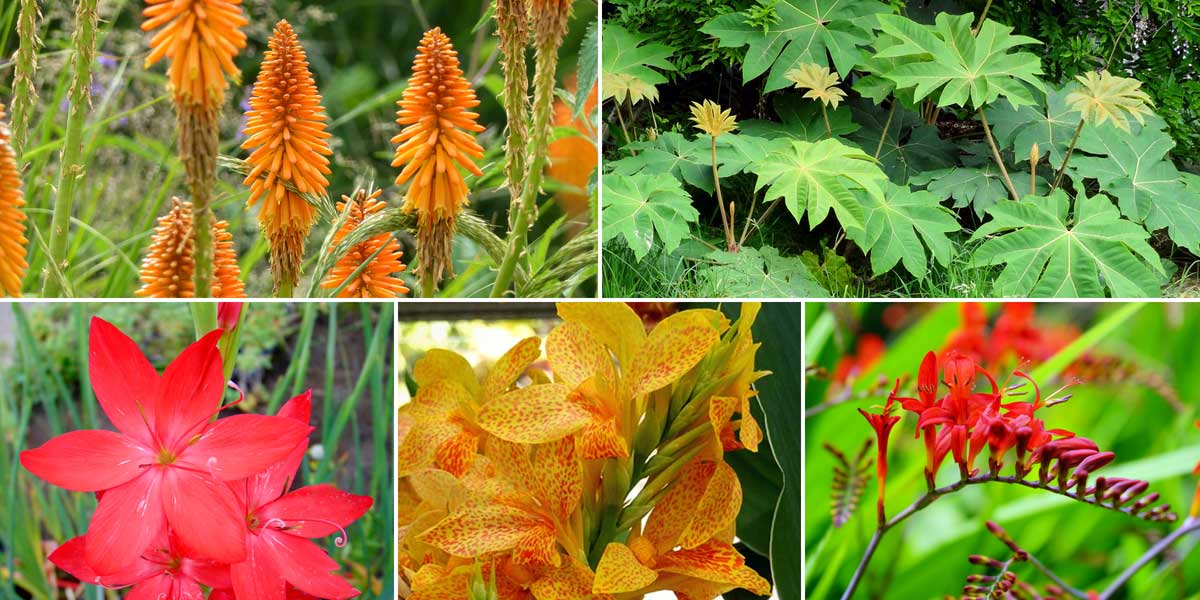
An idea for a combination in an exotic garden: Kniphofia ‘Fiery Fred’, Tetrapanax papyrifera ‘Rex’, Schizostylis coccinea ‘Major’, Canna ‘Picasso’ and Crocosmia
Incorporate cannas into a very colourful summer bed, among rudbeckias, cosmos, coreopsis, dahlias, gladioli, crocosmias, and shrub salvias… You will create a bed that catches the eye and impresses, serving as a focal point in your garden! Compose a stunning summer scene by planting purple-leaved cannas alongside bright red dahlias and orange-flowered crocosmias. You may also want to add some colourful gladioli and daylilies! You can also integrate some pennisetums, so that their spikes bring a bit of movement and lightness!
Use cannas to add volume and height to a bed, by placing a few clumps among slightly shorter perennials. Similarly, cannas can also provide small touches of colour in a more subdued, less colourful bed. They will bring dynamism and vitality to it!
Do not hesitate to plant cannas in isolation, for example in the middle of a short grass meadow, to highlight them even more.
→ Discover more ideas for combinations with Cannas in our advice sheet.
Did you know?
- An edible and utilitarian plant
The rootstocks of Canna edulis are edible; they were traditionally consumed by Native Americans and are still used in some regions (Caribbean, South America, Southeast Asia…). They are rich in starch and can be consumed as starch or cooked like potatoes. Cannas are also sometimes used for animal feed to nourish livestock.
The seeds, black and very hard, can be used as beads to make jewellery. They are also used to make the kayamb, a musical instrument from Réunion.
The rootstock of the canna has medicinal properties.
Useful resources
-
- Discover our range of cannas!
- An idea for pairing to integrate canna into the garden: Exotic atmosphere
- Our advice sheet: 8 summer bulbs with orange flowers
- Our advice sheets: How to choose a canna?, growing a canna in a pot, where and how to plant cannas?; multiplying your cannas and Our secrets for having cannas in bloom all summer long.
Frequently asked questions
-
My cannas are not flowering!
If you obtained them from sowing, you may have to wait until the second year to see them flower... Otherwise, perhaps you started them too late. Cannas take a long time to flower, which is why it is best to plant them in winter in pots that you place indoors, then move them to the garden as soon as there is no longer a risk of frost. Make sure that the growing conditions suit them: cannas need warmth and humidity to bloom well! Plant them in full sun and water them regularly in summer. They will also appreciate a supply of fertiliser or compost. If you are growing them in a region that is too cold, some varieties may also struggle to flower.
- Subscribe!
- Contents
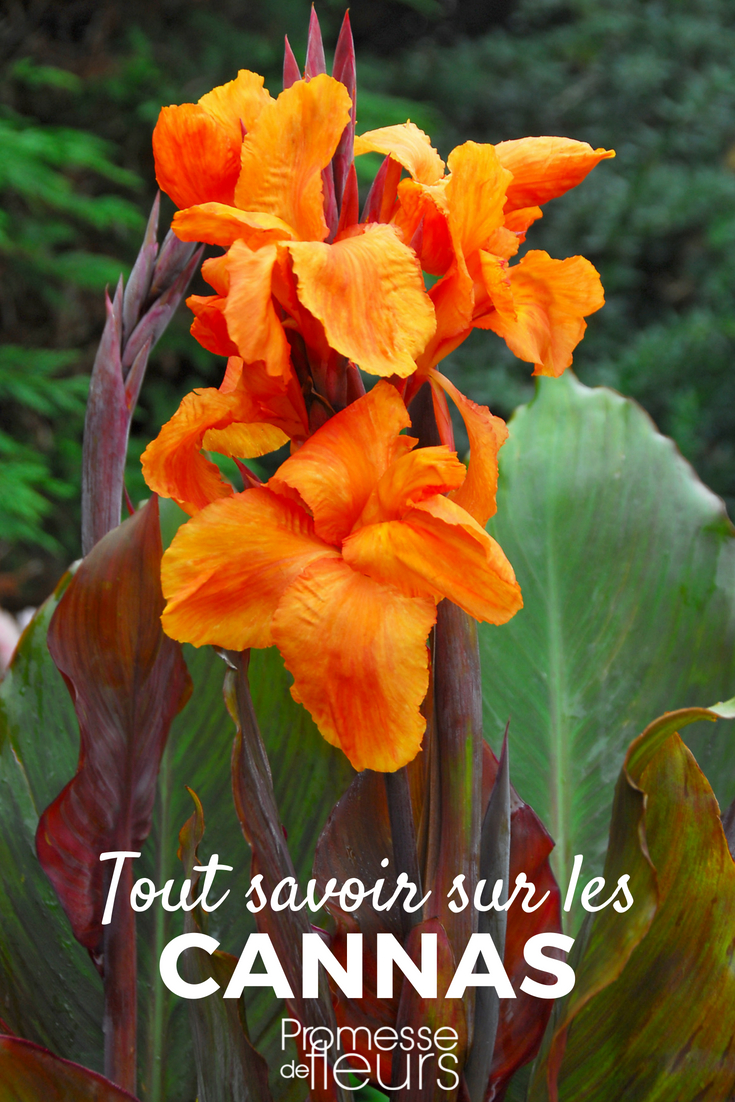
































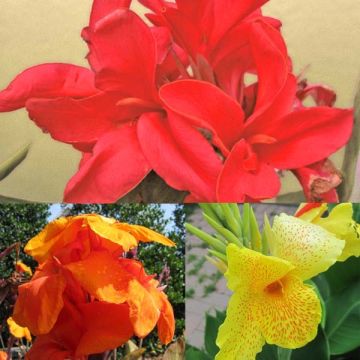
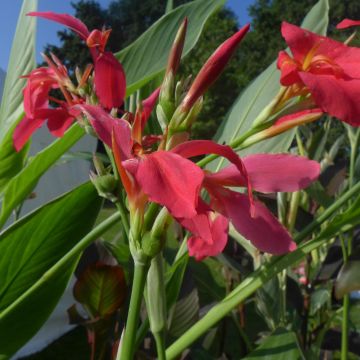

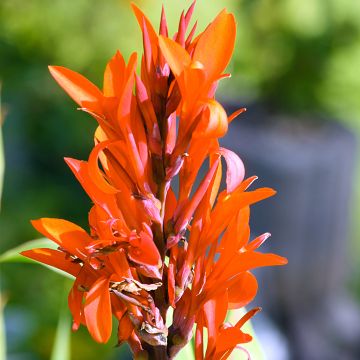
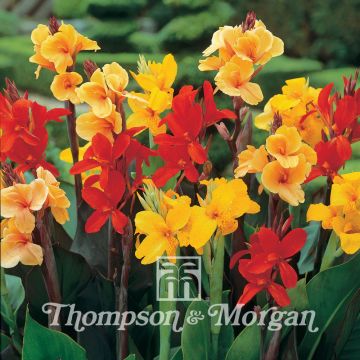


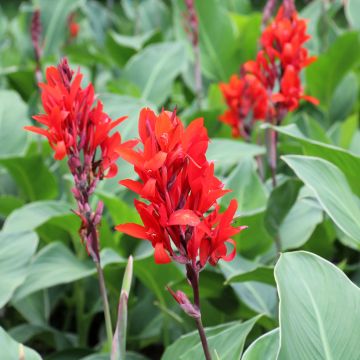

Comments